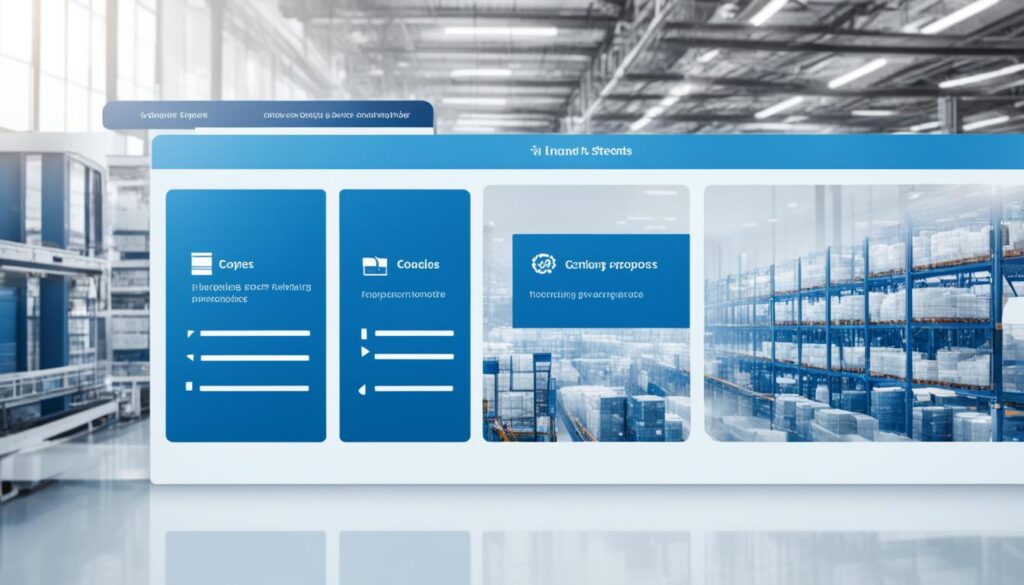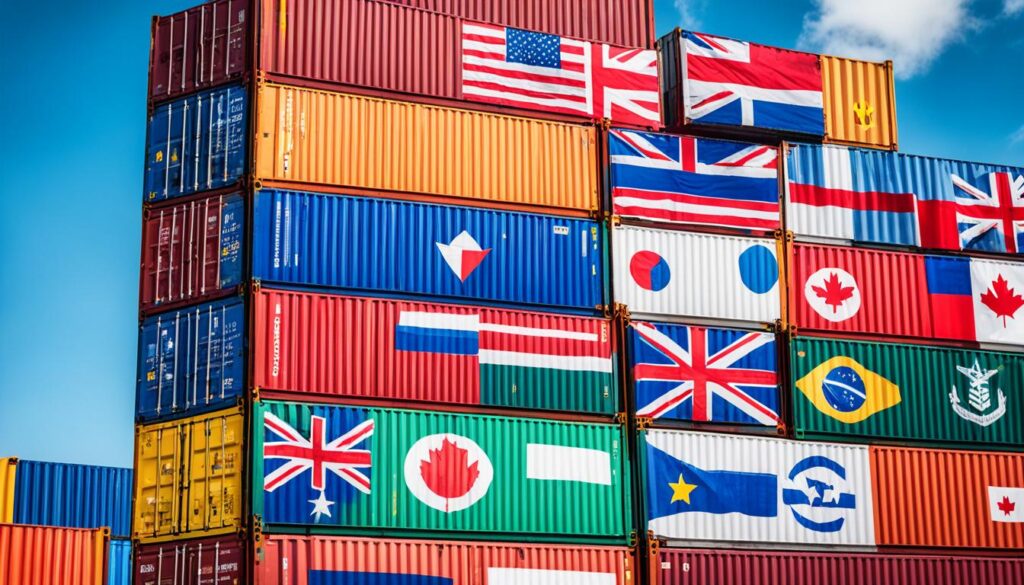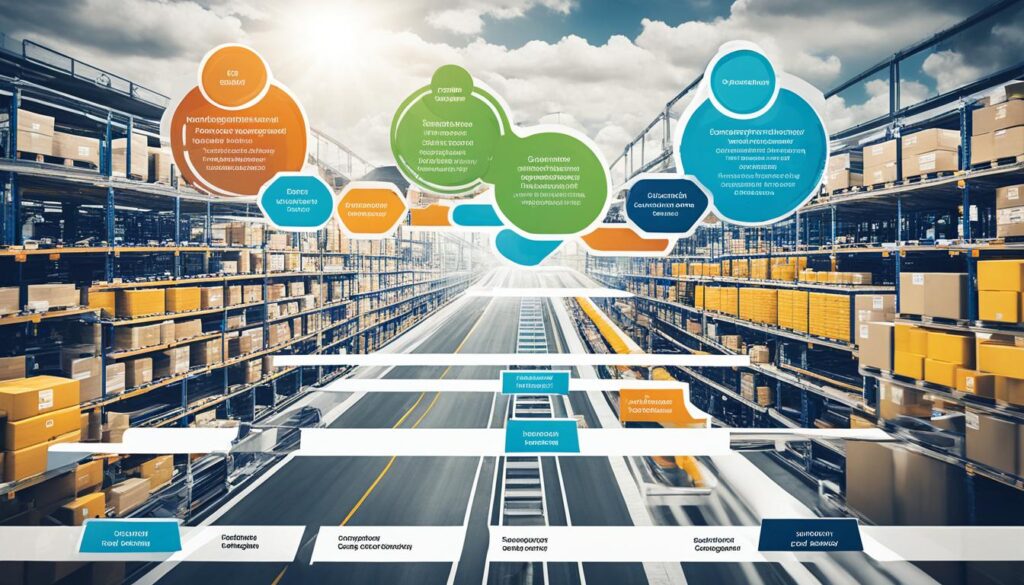Have you ever wondered how duty rates are determined for international trade? Do you think it’s a straightforward process, or is there more complexity involved than meets the eye?
When it comes to importing goods, duty rates play a significant role in determining the costs involved. They are the tariffs or taxes imposed on imported products by customs authorities. But how are these rates calculated, and who has the final say in determining them?
In this article, we will explore the intricacies of duty rates for international trade, including how they are determined, the role of customs authorities, and the impact they can have on import costs. So, if you’re eager to unravel the mystery behind duty rates, keep reading.
Key Takeaways:
- Duty rates are the tariffs or taxes imposed on imported products.
- Experts spend years learning how to classify items and determine the correct duty rate.
- Customs authorities, such as CBP, have the final say in determining duty rates.
- Calculating duty rates involves finding the correct HTS code or schedule B number for each product.
- Import taxes, such as value-added tax (VAT) or goods and services tax (GST), can also impact the overall costs.
How to Calculate Duty Rates
When it comes to international trade, understanding how to calculate duty rates is crucial. Duty rates, also known as customs duty rates, determine the amount of tax and fees you need to pay when importing goods into a country. In this section, I will guide you through the process of calculating duty rates accurately.
Duty Rates Definition and Meaning
Duty rates are the taxes imposed on imported goods by a country’s customs authority. These rates vary depending on the type of product and the country of origin. Duty rates are determined by the Harmonized Tariff System (HTS), which provides codes for classifying products. Each HTS code corresponds to a specific duty rate for a particular product.
Calculating duty rates by country involves determining the correct HTS code for your product and finding the corresponding duty rate. This classification process is complex and requires expertise. Consult with freight forwarders or customs brokers who can assist you in finding the appropriate HTS code and calculating accurate duty rates for your imports.
The Importance of Accurate Product Declaration
“The key to calculating duty rates correctly lies in accurate product declaration. Misdeclaring products or undervaluing them to reduce duty rates is illegal and can lead to severe penalties.”
Undervaluing goods can attract higher duty rates and scrutiny from customs authorities, ultimately resulting in shipment delays and financial losses. To avoid these consequences, always provide truthful and detailed information about your products during the customs declaration process.
Certificate of Origin and its Impact on Duty Rates
Certificate of Origin is an important document that certifies the country where a product was manufactured. The origin of a product can affect the duty rate applied. Some countries have preferential trade agreements or free trade agreements that reduce or eliminate duty rates for specific products from certain countries. By providing the correct Certificate of Origin, you can take advantage of lower duty rates and ensure compliance with customs regulations.
Common Duty Rates by Country
| Country | Duty Rate Range |
|---|---|
| United States | 0% – 25% |
| United Kingdom | 0% – 20% |
| Canada | 0% – 35% |
| Australia | 0% – 10% |
Note: The duty rate range mentioned in the table is for illustrative purposes only and may vary depending on the product and specific circumstances. It is essential to consult official sources and customs authorities for accurate duty rate information.

Having a clear understanding of how to calculate duty rates is crucial for international traders. It ensures compliance with customs regulations, prevents legal issues, and helps in accurate cost calculations. By working with reputable freight forwarders or customs brokers and providing accurate product information, you can navigate the duty rate calculation process effectively.
Tariff Rates and Taxes
When it comes to international trade, understanding tariff rates and taxes is essential. Tariffs are fees imposed by governments on specific products, while import taxes, such as value-added tax (VAT) or goods and services tax (GST), are additional costs added to imported goods. These rates can vary between countries and significantly impact the prices of imported goods.
Each country has its own VAT or GST rate that is applied to all products. It’s crucial for companies to factor in these taxes when planning their shipping strategy to ensure that all costs are accounted for and to avoid any surprises along the way.
To give you a clearer picture, here’s a breakdown of the key terms:
- Tariff Rates: Fees imposed by governments on specific products
- Import Taxes: Additional costs like VAT or GST added to imported goods
- Value-Added Tax (VAT): A tax on the value added to a product at each stage of the supply chain
- Goods and Services Tax (GST): A tax on the consumption of goods and services
Let’s take a closer look at how these rates and taxes can impact international trade:
“Tariff rates and import taxes are crucial considerations for companies engaged in international trade. These costs directly impact the pricing and profitability of imported goods. By understanding and properly accounting for these fees, businesses can effectively plan and optimize their shipping strategies.”
Having a clear understanding of tariff rates and import taxes is fundamental for any company involved in international trade. By accounting for these costs, businesses can make informed decisions to ensure profitability and efficiency in their operations.
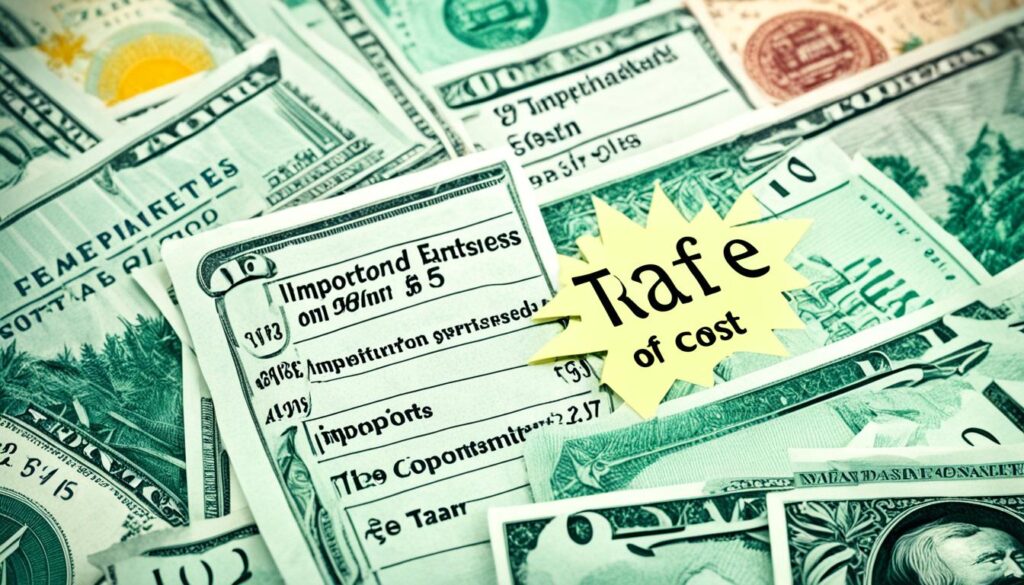
Stay tuned for the next section, where we will explore how to find duty and tariff information to navigate the complexities of international trade.
Finding Duty and Tariff Information
When it comes to international trade, it is crucial to have access to accurate duty and tariff information. Fortunately, there are several valuable resources available that can help businesses navigate through the complex world of duty rates and tariffs.
Harmonized Tariff System (HTS)
The Harmonized Tariff System (HTS) serves as a comprehensive reference manual that provides duty rates for various products. It is a standardized system used globally to classify and identify goods for customs purposes. By correctly identifying the HTS code for a product, businesses can determine the applicable duty rate. The HTS code is a key component in calculating duty rates and ensuring compliance with customs regulations.
U.S. International Trade Commission-Tariff Database
The U.S. International Trade Commission-Tariff Database is an interactive tool that offers a wealth of information on duty rates and tariffs. It allows users to search for specific products and provides estimates of duty rates based on the HTS code or product description. Although these rates are approximate, they can still serve as a valuable resource for businesses planning their import and export activities.
Customs Info Database
The Customs Info Database is another useful tool that helps businesses calculate duty rates and taxes. This database offers detailed information on duty rates by country and product, allowing businesses to look up specific duty rates for their imports. While it may require registration, the Customs Info Database provides valuable insights into tariff rates and enables businesses to make informed decisions regarding their international trade activities.
Access to accurate duty and tariff information is essential for businesses engaged in international trade. Utilizing resources such as the Harmonized Tariff System, U.S. International Trade Commission-Tariff Database, and Customs Info Database can help businesses navigate the complexities of duty rates and tariffs effectively.
Using these resources, businesses can easily:
- Look up duty rates based on HTS codes
- Estimate duty rates for specific products
- Make informed decisions about sourcing and pricing
- Ensure compliance with customs regulations
By leveraging these tools and databases, businesses can streamline their import and export processes, saving both time and money in the long run.
Comparison of Duty and Tariff Information Resources
| Resource | Features | Registration Required | Rate Accuracy |
|---|---|---|---|
| Harmonized Tariff System (HTS) | Provides duty rates for various products | No | Exact rates |
| U.S. International Trade Commission-Tariff Database | Offers estimates of duty rates based on product description | No | Approximate rates |
| Customs Info Database | Provides detailed information on duty rates by country and product | Yes | Accurate rates |
Having access to reliable and up-to-date duty and tariff information is crucial for businesses involved in international trade. By utilizing resources such as the Harmonized Tariff System, U.S. International Trade Commission-Tariff Database, and Customs Info Database, businesses can confidently navigate the complexities of duty rates and tariffs.
Customs Compliance and Duties
When it comes to international trade, customs compliance is a key aspect that should not be overlooked. It involves understanding and adhering to the rules and regulations set by customs authorities to ensure smooth import and export processes.
One crucial aspect of customs compliance is correctly classifying products with the appropriate Harmonized System (HS) code. The HS code is used worldwide to categorize goods for customs purposes. It determines the duty rates, restrictions, and regulations that apply to specific products.
Properly classifying products with the correct HS code is essential for determining the duty rates that importers need to pay. Duty rates can vary depending on the product category, country of origin, and trade agreements in place.
“The correct classification of products with the appropriate HS code is crucial for determining accurate duty rates and ensuring compliance with customs regulations.”
Deliberately misdeclaring products to obtain lower duty rates or circumvent import restrictions can have serious consequences. Customs authorities have strict penalties and fines for customs evasion or non-compliance. It’s crucial to always provide accurate and truthful information when declaring goods for import or export.
Importers of record bear the responsibility for customs compliance, which includes properly documenting and classifying products, as well as paying the correct duties and taxes. They need to ensure that all necessary customs documentation, such as commercial invoices, packing lists, and bills of lading, are complete, accurate, and in compliance with customs requirements.
To navigate the complexities of customs compliance and duties, it’s recommended to work with a reputable customs broker or freight forwarder. These professionals have expertise in customs regulations and can provide guidance on proper product classification, assist with customs documentation, and ensure accurate duty payments.
Benefits of Working with a Customs Broker or Freight Forwarder
A customs broker or freight forwarder can offer numerous benefits in ensuring customs compliance and smooth import/export processes:
- Expertise in customs regulations and procedures.
- Assistance in proper product classification and determination of duty rates.
- Guidance on completing and submitting customs documentation.
- Management of customs clearance processes.
- Efficient handling of import duties and taxes.
- Optimization of shipping strategies for cost-effective and timely delivery.
By partnering with a customs broker or freight forwarder, businesses can navigate the customs landscape with confidence, ensuring compliance with regulations and minimizing the risk of penalties or delays.
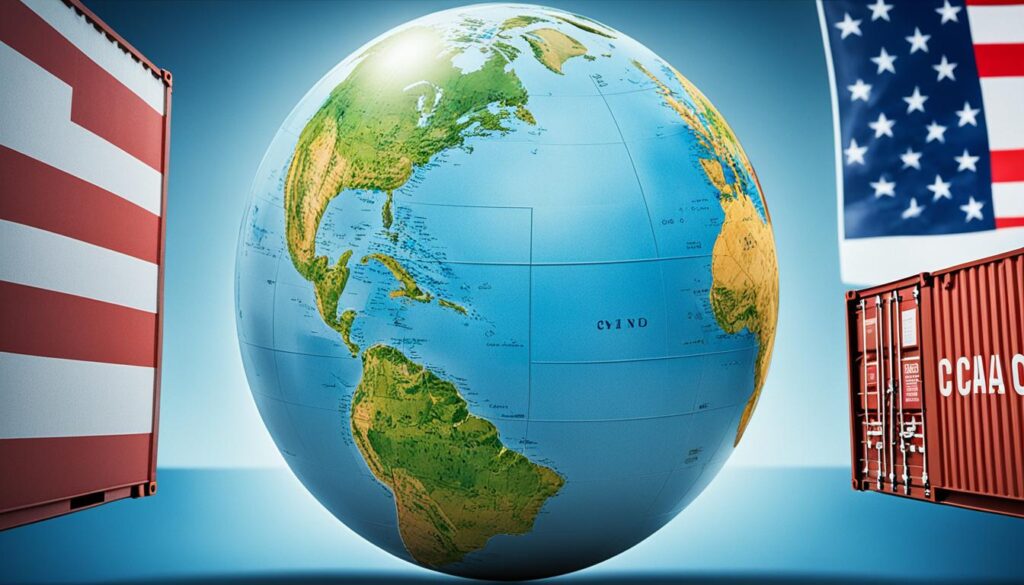
Case Study: Customs Compliance and Duty Rates
To illustrate the importance of customs compliance and correct duty rate classification, let’s consider a hypothetical case study of a company importing electronic devices.
| Product | Incorrect HS Code | Correct HS Code | Duty Rate |
|---|---|---|---|
| Laptops | 8471.29 (Desktop computers) | 8471.30 (Laptop computers) | 2% |
| Tablets | 8471.60 (Automatic data processing machines) | 8471.41 (Tablets) | 0% |
| Smartwatches | 8517.12 (Telephones for cellular networks) | 8517.62 (Smartwatches) | 2.6% |
In this case, misclassifying the laptops as desktop computers would result in a higher duty rate of 2% instead of the correct duty rate of 0%. Similarly, misclassifying the tablets as automatic data processing machines would result in an unnecessary duty rate of 2% instead of the correct duty rate of 0%. Correctly classifying the products not only ensures compliance but also helps reduce costs.
By prioritizing customs compliance, understanding duty rate classification, and working with reputable customs professionals, businesses can navigate the complexities of international trade, avoid compliance issues, and optimize their supply chain operations.
Incoterms and Duty Rates
When it comes to international trade, understanding the responsibilities of both the seller and buyer is essential. This includes the duty payment responsibility, which is defined by Incoterms. Incoterms are a set of standardized rules that outline the obligations and risks associated with the transportation and delivery of goods.
Choosing the right Incoterms can significantly impact overall costs, as well as the relationship with manufacturers and suppliers. It’s crucial to work with a reputable freight forwarder who is well-versed in international trade regulations and can help determine the most appropriate Incoterms for your specific products, the countries involved, and the current trade climate.
Benefits of Working with a Freight Forwarder
Partnering with a reliable freight forwarder offers several advantages when it comes to navigating duty rates and Incoterms.
- Expertise: Freight forwarders have extensive knowledge of customs regulations and duty payment responsibilities. They can provide valuable guidance in selecting the most suitable Incoterms for your business.
- Efficiency: Freight forwarders handle all aspects of the shipping process, including documentation, customs clearance, and logistics. Their expertise ensures smooth operations and compliance with duty payment requirements.
- Cost-effectiveness: By leveraging their industry expertise and relationships, freight forwarders can help optimize your shipping strategy, potentially reducing duty rates and overall transportation costs.
Working closely with a freight forwarder can streamline your international shipping operations and ensure proper compliance with duty payment responsibilities.

| Benefits of Working with a Freight Forwarder |
|---|
| Expertise |
| Efficiency |
| Cost-effectiveness |
Changing Tariff Landscape
As global trade dynamics evolve, it is crucial for companies to stay informed about the changing tariff landscape. Tariffs, which are fees imposed on imported goods, can be subject to frequent adjustments due to government decisions and trade agreements.
An example of a significant trade agreement that has impacted tariff rates is the United States-Mexico-Canada Agreement (USMCA). The USMCA, which replaced the North American Free Trade Agreement (NAFTA), has resulted in the elimination of tariffs between the United States, Canada, and Mexico. This has opened up new opportunities for businesses within the region and streamlined trade processes.
Another notable event that brought about changes in tariffs was the trade tensions between the United States and China during the Trump administration. As a response, a blanket 25% tariff on Chinese imported goods was imposed, affecting various industries heavily reliant on Chinese imports.
Keeping track of these tariff changes is vital for companies engaged in international trade. It allows them to anticipate and mitigate potential price fluctuations, adapt their sourcing strategies, and project the impact on consumer behavior.
To navigate this ever-evolving tariff landscape successfully, businesses should stay updated on both current and upcoming trade agreements and government policies that shape tariff rates. Monitoring industry news, consulting with trade experts, and tapping into reliable information sources are essential steps to making informed decisions and optimizing global trade operations.
Image:

Import Costs and Shipping Strategy
When planning international shipments, companies must carefully consider import costs and develop a robust shipping strategy. Two key approaches can be taken to incorporate import fees into the overall shipping strategy: total landed cost and customer payment of import duties and taxes.
Total Landed Cost Solution:
The total landed cost solution involves the upfront inclusion of all duties, taxes, and shipping costs in the product price. By accounting for these expenses in advance, companies can provide customers with a seamless and transparent experience, eliminating any surprise fees upon delivery. This approach prioritizes customer satisfaction and ensures a smooth customs clearance process.
Customer Payment of Import Duties and Taxes:
Alternatively, companies may choose to shift the responsibility of import duties and taxes to their customers. While this approach may result in lower upfront costs for the company, it can lead to a less favorable customer experience. Customers may be caught off guard by unexpected fees incurred during the delivery process, potentially resulting in frustration and dissatisfaction. It is crucial to communicate clearly and transparently with customers regarding their potential import-related responsibilities.
Ultimately, the choice between these two approaches depends on the specific needs and preferences of the company and its customers. Factors such as target market, customer expectations, and pricing strategies should inform the decision-making process.
Benefits of Incorporating Import Costs into the Shipping Strategy:
- Enhanced customer experience by eliminating surprise fees
- Improved transparency and clarity in pricing
- Streamlined customs clearance process
- Reduced risk of delivery delays due to customs hold-ups
Considerations for Customer Payment of Import Duties and Taxes:
- Potential negative impact on customer satisfaction and brand reputation
- Increased complexity in managing customer expectations
- Clear communication and accurate estimation of import-related fees
“Incorporating import costs into the shipping strategy requires careful consideration of customer expectations and overall business goals.”
| Total Landed Cost Solution | Customer Payment of Import Duties and Taxes |
|---|---|
| Includes all duties, taxes, and shipping costs upfront | Shifts import duty and tax responsibility to customers |
| Enhances customer experience by providing a transparent pricing structure | May lead to customer dissatisfaction due to unexpected fees |
| Streamlines customs clearance process | Involves additional complexity in managing customer expectations |
| Reduces the risk of delivery delays | Requires clear communication and accurate estimation of fees |
Expert Assistance for International Shipping
When it comes to international shipping, partnering with a reputable freight forwarder or customs broker is essential for a smooth and successful process. While a reliable 3PL provider can handle domestic shipping needs, the expertise of freight forwarders and customs brokers is invaluable in navigating the complexities of international trade.
A freight forwarder acts as an intermediary between the shipper and various transportation services, streamlining the logistics process. They have extensive knowledge of shipping regulations, documentation requirements, and customs procedures. By leveraging their expertise, you can ensure compliance with customs regulations, minimize shipping delays, and optimize your shipping strategies.
A customs broker, on the other hand, specializes in customs clearance and ensures that your goods comply with the relevant import and export regulations. They have a deep understanding of duty rates, tariff classifications, and the necessary documentation for smooth customs clearance. With their assistance, you can accurately calculate duties and taxes, avoid costly penalties, and expedite the customs clearance process.
Consulting with multiple providers is recommended to find the best fit for your specific needs. Each freight forwarder and customs broker may offer different services, expertise, and rates, so it’s essential to evaluate them based on your company’s unique requirements.
Benefits of Working with a Freight Forwarder or Customs Broker
- Expert guidance on customs regulations and documentation
- Efficient handling of customs clearance procedures
- Accurate calculation of duties and taxes
- Optimized shipping strategies
- Minimized shipping delays
- Compliance with import and export regulations
| Key Services | Freight Forwarder | Customs Broker |
|---|---|---|
| Customs Clearance | Yes | Yes |
| Documentation Assistance | Yes | Yes |
| Duty and Tax Calculation | No | Yes |
| Shipping Strategy Optimization | Yes | No |
| Customs Regulation Expertise | Yes | Yes |
By leveraging the expertise of freight forwarders and customs brokers, you can streamline your international shipping operations, minimize risks, and ensure compliance with customs regulations. Their knowledge and experience are invaluable in navigating the complexities of the global supply chain.
Importance of VAT/GST Compliance
When it comes to shipping internationally, especially to Europe, VAT and GST compliance are absolutely essential for companies. As importers of record, it is crucial to have a valid VAT number to properly fulfill customs documentation and duty payment responsibilities.
One important aspect that companies need to clarify with their customers upfront is who is responsible for VAT or GST payment. Failure to account for these taxes can result in unexpected costs and potential impacts on profit margins. To navigate the complex landscape of VAT and GST compliance, it is advisable to consult with a knowledgeable supply chain advisory group.
By consulting with experts, companies can optimize their costs and ensure compliance with VAT/GST requirements. This includes properly calculating import fees, understanding VAT compliance regulations, and staying up to date with any changes in the VAT/GST tax laws.

